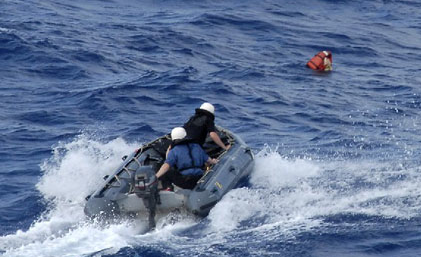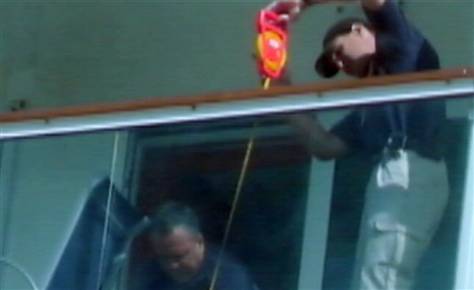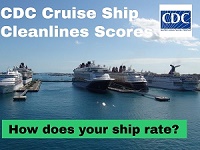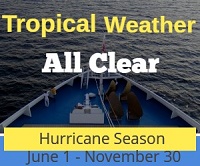Shipdetective News Blog
Cruise Ships, Cruise Destinations, Cruise Advice, Cruise News, and More
Venice
Get to know our slice of Paradise - located on the SW Coast of Fl.
Attractions
Beaches
Canoe/Kayak
Boat Launches
Boat Charters
Fishing Charter
Fishing Piers
Historical Sites
Golf
Parks
Hotels
Relocate
Venice Map
How Do You Fall Off a Cruise Ship?
posted January 6, 2014
by Casey McKenna-Monroe, Managing Editor
A cruise passenger was pulled lifeless out of the ocean on December 21 after being reported overboard from the Rhapsody of the Seas. The vessel, sailing about 300 miles off the coast of Brisbane, Australia captured the incident on closed circuit television and reported the man overboard to Australian authorities who assisted in the search and rescue.
Another passenger was recorded jumping overboard from the Adventure of the
Seas on its way to Puerto Rico.
 In his case, passengers spotted the man
overboard and reported him to the crew. That’s not the case in the most
recent man overboard incident. A wife reported her husband missing from the
Independence of Seas as it pulled into the Cayman Islands on a port of call.There
were no witnesses, but local authorities believe the man fell overboard sometime near dawn. The
accident happened just five days after the Adventure of the Seas occurrence.
In his case, passengers spotted the man
overboard and reported him to the crew. That’s not the case in the most
recent man overboard incident. A wife reported her husband missing from the
Independence of Seas as it pulled into the Cayman Islands on a port of call.There
were no witnesses, but local authorities believe the man fell overboard sometime near dawn. The
accident happened just five days after the Adventure of the Seas occurrence.
This third overboard in one month is the eighteenth person overboard reported in 2013, according to www.cruisejunkie.com. While the known number of 18 demonstrates that a very small number of cruise passengers that go overboard, it's still one passenger too many. Each instance renews the push for cruise line safety and reporting measures to be strengthened.
Why do people go overboard?
At this time, it is unknown why or how the passengers on three different Royal Caribbean vessels ended up overboard within a ten day period. Authorities may never know.
“I think there’s all kinds of reasons why people fall overboard,” said Ken Carver, Chairman of the International Cruise Victims Association. The ICV advocates on behalf of victims and their families for legislation to protect cruise passengers. He created the association after his daughter, Merrian Carver, vanished from an Alaskan cruise. Due to the cruise line’s failure to report her disappearance after the first night of the cruise, all video recordings were taped over and authorities had few clues to follow. Unbeknownst to the family, what video did remain was destroyed three years later. Nearly ten years later, it is still unclear what happened to Merrian Carver.
“I think alcohol plays a roll in this. I think that crime plays a role in this. People can become distraught, and if they wanted to go overboard, they could in an instant,” said Carver.
It’s not uncommon for suicide to be the reason passengers go overboard. Video captured a woman intentionally leaping from the Grand Princess in November while on a cruise between San Francisco and Hawaii. Other passengers have left notes indicating their intent to jump. Homicide has occurred, too, as in the case of newlywed George Smith who vanished under mysterious circumstances on the Royal Caribbean Brilliance of the Seas. His stateroom had blood on the sheets and on the handrail. Video cameras captured three men leaving his room at 4:30 a.m., with his wife later found passed out in another area of the ship. Of course, alcohol can play a role. Sarah Kirby fell from her balcony on the Carnival Destiny and suffered multiple broken bones, lung contusions and blood clots. She is one of the rare recovered survivors of a passenger overboard incident. She has since filed a lawsuit in which she blames bartenders on the Carnival Destiny, stating they pushed alcoholic beverages and encouraged her to drink more until she was heavily intoxicated before she jumped.
Even the random “urge to jump” is a credible explanation for passenger over
boards. In a study published by Florida State University’s psychology
department in 2012, the feeling has been dubbed high-place phenomenon. When
a person with high anxiety sensitively stands at a height and quickly steps
back, even when it’s clear the edge was stable, they wondered why they moved
away if it was safe. The brain misinterprets this survival instinct as an
urge to leap. While further research is needed, the study could help explain
some person overboard scenarios, especially if there was no evidence the
individual intented or had reason to commit suicide.

When cruise lines were asked for feedback, they directed us to the Cruise Line International Associated, or CLIA, for a standard comment. “The very low number of overboard incidents that do occur almost always result from either intentional jumping or irresponsible behavior causing an unintended incident,” said David Perkins, spokesperson for CLIA.
But in many cases, the reason why passengers go overboard remains a mystery. “Until we get a handle on [rescuing passengers overboard], we don’t really know the reason,” Carver stated.
How do people go overboard?
It’s not easy to go overboard for most sober and reasonable people. The International Maritime Organization sets the safety regulations for the international industry and specifies railings should be around four feet tall. The Cruise Vessel Safety and Security Act of 2010 states rails should not be less than 42 inches above the deck. For the average person, about 66 inches in height, the top of the rail falls mid-torso. Taller individuals may find the railing striking about navel height.
To fall overboard, a person would need to step up and lean over the railing, be sitting on the railing, or have stepped up higher, say by standing on a chair or table, and lose their balance.
Making Cruise Lines Safer
The Cruise Vessel Safety and Security Act (CVSSA) of 2010 proposed measures
aimed at improving cruise ship safety, such as increasing the guardrail
height to 54 inches or implementing man overboard-alert systems.

Organizations like the International Cruise Victims Associations push for the installation of man overboard alert systems as a cost and life-saving measure. These systems include a network of cameras and sensors that detect when a person falls overboard and immediately activates an alarm. In some cases, the systems drop a marker buoy to indicate where the overboard occurred since stopping a large cruise vessel and turning around to execute a search does take some time.
Unfortunately, many cruise lines still have not installed these systems and as vessels tend to have international registries, there is very little legal recourse for cruise passengers. The vessel is considered part of the territory of the country it is registered to and is subject to the laws and maritime regulations of that country. Those laws may not be as rigorous as expected. And, even if the company is headquartered somewhere like Miami, because the ship is registered to another country like the Bahamas or Panama, U.S. laws do not apply.
While the new rail heights can be enforced, a Coast Guard memo released in June 2011 states it is not possible for some provisions of the CVSSA to be enforced, like the installation of man over board systems.
When asked about the development and installation of these systems, CLIA spokesperson Perkins said, “Although the CVSSA regulations to implement the legal requirements for systems “capturing images of passengers or detecting passengers who have fallen overboard” have yet to be published, the cruise industry continues to work collaboratively with the U.S. Coast Guard to provide input and information on such technologies.”
It’s unclear what “providing input and information” means, or when the CVSSA will be revised to include language that specifies what the man overboard system will entail. The technology does exist. Maritime security companies have manufactured a range of man overboard options ranging from pendants or devices worn by the crew to a combination of closed circuit cameras and sensors that detect when a mass falls overboard.
In the meantime, the investigation remains ongoing in the overboard incidents on the Rhapsody of the Seas, Adventure of the Seas, and Independence of the Seas.
“You realize there is legislation to tighten this up, but it’s frustrating to pass a law and nothing is done,” says Carver.
Until these devices are installed, it’s important to be vigilant and aware of your surroundings when cruising. Organizations like the ICV continue to champion man overboard systems and strengthening the CVSSA law to prevent crime and passenger over boards at sea.
Photo Credits:
1. http://upload.wikimedia.org/wikipedia/commons/6/68/Independence_of_the_Seas_4.jpg
2. http://c.gcaptain.com/wp-content/uploads/2008/03/man-overboard-recovery.png
3.http://www.cruiselawnews.com/uploads/image/FBI-Ellis-Seitz.jpg
Related Links
Cruise Vessel Safety and Security Act
International Cruise Victims Association
Cruise Lines International Association (CLIA)
Cruise Junkie Passenger Overboard Chart
Ship Links
Cruise Ship Index
Cruise News
CDC Sanitation Ratings
Cruise Ship Safety
Travel Warnings









